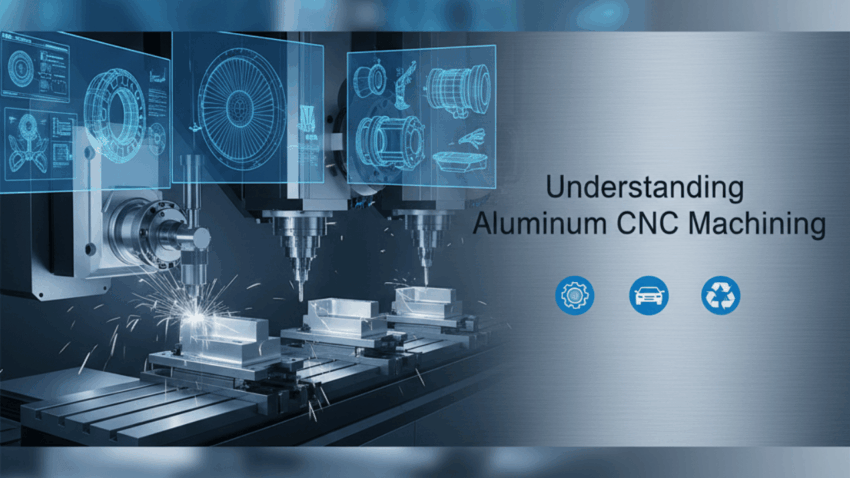Understanding Aluminum CNC Machining
Computer Numerical Control, or CNC, machining is the act of crafting and building components with extreme precision, dictates the movement of tools and associated machines stemming from pre-programmed software instructions directly from a computer, and does so automatically with no human interaction necessary. This method simplifies the processes of cutting, drilling, milling, and turning of raw materials and maximizes part creation – all while ensuring surpassing accuracy and repeatable efficiency. Industries like space exploration, medicine and electronics greatly benefit from this digital and technological machining process.
Click here to read more about the Top Aluminum CNC Machining Parts Manufacturer and Supplier in China – Baetro.
The Role of Aluminum in CNC Machining
Among a multitude of materials used for CNC machining, aluminum seems to take a huge portion, which is a result of its marvelous characteristics. It is lightweight, possesses great strength, and above all is highly machinable, which results in greatly reduced tool wear and significantly reduced machine downtime. Moreover, aluminum, being naturally corrosion-resistant, makes it a great candidate for components that may be exposed to the elements. The above-listed factors, among others, make aluminum a great candidate to manufacture high-performance, low-cost products in a multitude of industries.
Benefits of Using Aluminum CNC Machines
Aluminum parts, being one of the most used materials in the crafting and construction of components ever, possess high strength and low weight, which comes in handy with parts that require a significant weight reduction while retaining the impressive durability.
Corrosion Resistance: Aluminum is resistant to corrosion, which eliminates the need for further treatments and increases the service life of the components.
Ease of Machining: Aluminum improves production time and minimizes the expense of cutting tools due to its ease of machining.
Thermal and Electrical Conductivity: Conducting heat and electricity qualify aluminum for use in electronic and thermal management systems.
Recyclability: Aluminum is an eco-friendly choice for sustainable engineering since its original properties are not altered when recycled.
Aluminum CNC machines help manufacturers accomplish accurate production, lower lead time, and outstanding quality.
Applications of Aluminum CNC Machining in Various Industries
Automotive Industry
The automobile industry largely uses aluminum CNC machining technology to manufacture lightweight and strong parts. Using aluminum in machining parts improves the fuel efficiency and the overall performance of the vehicle because of its excellent strength-to-weight ratio. Parts like engine blocks and cylinder heads, as well as blocks of transmission and suspension systems, are all parts that aluminum CNC machining technology helps provide advanced surface quality and precision machining. In addition, the die plating obtained from CNC technology always guarantees very close tolerances on the critical features that need to be held as well as the surface quality in automotive systems, which are essential for automotive safety and reliability.
Aerospace Applications
Aluminum CNC machining is also of great importance in the aerospace industry. The aerospace industry’s Aluminium parts, like structural components, brackets, and enclosures, take advantage of aluminum’s weight as well as its ability to resist corrosion. CNC machining is capable of producing intricate shapes with rigid guidelines of the industry waste, and geometry with the utmost precision and quality standards, which helps improve fuel consumption, and aerodynamic features of machines and aerospace vehicles, as well as satellites and other outer space exploration devices.
Aluminum CNC machining is applied in electronics and consumer goods industries because of its thermal and mechanical properties, and its aesthetic appearance after fabrication. This allows heat sinks, enclosures, and frames of various electronic devices to be fabricated. It also allows laptops, smartphones, and various home appliances to possess aesthetic and functional designs due to the precision and customizability features of CNC machining. Furthermore, the recyclability of aluminum is advantageous considering the rising interest in sustainable product solutions.
The Aluminum CNC Machining Process
Initial Design and Prototyping
As with any manufacturing process, the CNC machining of aluminum starts with an initial design and a prototype. Engineers then utilize CAD software to create an accurate 3D model to scale. The model will contain all the relevant specifications of the part. The model will then act as a guide for machining procedures to ensure the exact same part is produced repeatedly. Prototyping techniques, including 3D printing and CNC machining processes, will also be utilized to test a design before committing to a production spell. An approach like this fulfills its purpose of cost optimization while also minimizing errors. The design functionality is also retained and errors are minimized during all production processes.
Selection of Aluminum Alloys
Proper selection of an aluminum alloy for CNC machining is vital as every alloy contains different characteristics that will impact the performance and the manufacturing process as a whole. The most commonly utilized ones are 6061 and 7075 alloys, with the accompanying engineering properties of excellent versatility as well as workability and corrosion resistance, and high strength, respectively. Other alloys may be selected based on criteria such as thermal conductivity, weight, or machinability. The final product will be determined based on the alloy selected and its balance between the mechanical, thermal and aesthetic properties.
Second Machining Techniques and Tools
Taking in account that aluminum can easily be scratched and shaped, it requires specific tools and unmatched precision in order to achieve the desired finish. With aluminum’s relatively low hardness, machining aluminum parts fits into the high-speed cutting category. These are some commonly used tools to achieve the lowest possible cutting edge wear: reshaped carbide cutting tools, thin bonded cutting tools, and aggressive and compressible metal bonded discs. Instructions for use of cutting oils or water-soluble coolants must be adhered to, as they are critical for managing lubrication and cooling fluid surface integrity. Parts of fabricated components are achieved through methods: they can be independently conducted or through complex combinations. CNC machines help achieve precise machining and tight tolerances, ensuring the product is of high quality and reliable.
Choosing the Right Aluminum CNC Machining Service Provider
Factors to Consider When Selecting a Service
In the context of selecting an aluminum CNC machining service provider, a number of important aspects need to be taken into account in order to achieve the desired outcome. These are evaluating customer service, customer support, and the spectrum of services provided.
Assessing Quality and Precision
The degree of quality and level of precision of the components of the system directly affect the functionality and reliability of the final product. It is important to understand the provider’s ability to maintain tolerances, especially if the design and part concerned are of a delicate nature or of high precision. Examining a portfolio, reviewing certifications such as the ISO 9001, or completing sample projects can assist in estimating the quality of the standards. As well, consider what kinds of equipment are used. Using modern CNCs with advanced multi-axis functionality contributes greatly to precision and smooth outcomes.
An evaluation of customer support and services offered.
The customer support during the whole cycle of development and production of the machined prototype, from the first consultation and initial prototype building to delivery, is also vital. Strong provider customer support during the whole cycle development and production of machined prototype, from first consultation, to initial prototype building, and, delivery, is also vital. Integrated customer support focuses on timely communication s, problem resolution, custom production modifications during production, and communication. Assess also the span of included services, for instance, service support with designs, post machining services such as coating and finishing, or types and flexibility in production volumes. Choosing a provider with wide span services assures streamlined workflow and lessens the need for multiple suppliers.
Ensuring Quality Results in Aluminum CNC Machining
Best Practices for Machining Aluminum
In realizing success in aluminum CNC machining, there are guidelines that must be followed. Think through the cutting tools used. Coatings made specifically for aluminum and high-speed steel (HSS), along with other carbide tools, should be considered. These types of cutting tools can increase precision and tool life. In addition, tools and equipment must be properly lubricated. Machines that operate with highly lubricated parts are less likely to form galling and sticking. This new generation CAM software also helps guide tool paths to reach high accuracy to within a few microns and increases efficiency in the machining of aluminum. These practices alone increase production efficiency and accuracy.
Quality Control Measures
During aluminum machining, there are quality assurance steps to be executed. Specialty tools are available for precision checking with CMMs and other components to help increase workflow. As aluminum grades are tested for various factors that affect efficiency, aluminum surfaces and other components are tested afterward. In the continuous production of these aluminum parts, in-built systems can calculate deviations and quickly relay them to keep the CNC machines within the desired parameters.
Common Challenges and Solutions in Machining Aluminum
Despite the valuable properties that aluminum carries in regard to machinability, there are certain issues that arise that need to be addressed for the right outcomes to be possible. One machinability issue is commonly referred to as ‘chip problems’ and is especially prevalent in the machining of softer aluminum alloys. The use of tools with broken chip geometry and sufficient cutting fluid delivery is a wonderful solution. Other issues arise due to thermal expansion caused by the high aluminum content and its highly thermally conductive nature, which can disturb the accuracy of the part. The implementation of aluminum tightening techniques or slowed cuts can resolve the issue. Last in the sequence, a lack of precision in surface finish, or the presence of tool marks and burrs, can also be problematic. The application of advanced tool designs along with optimized feed, followed by secondary operations such as deburr or polish, is a fully capable answer to the problems stated above.







